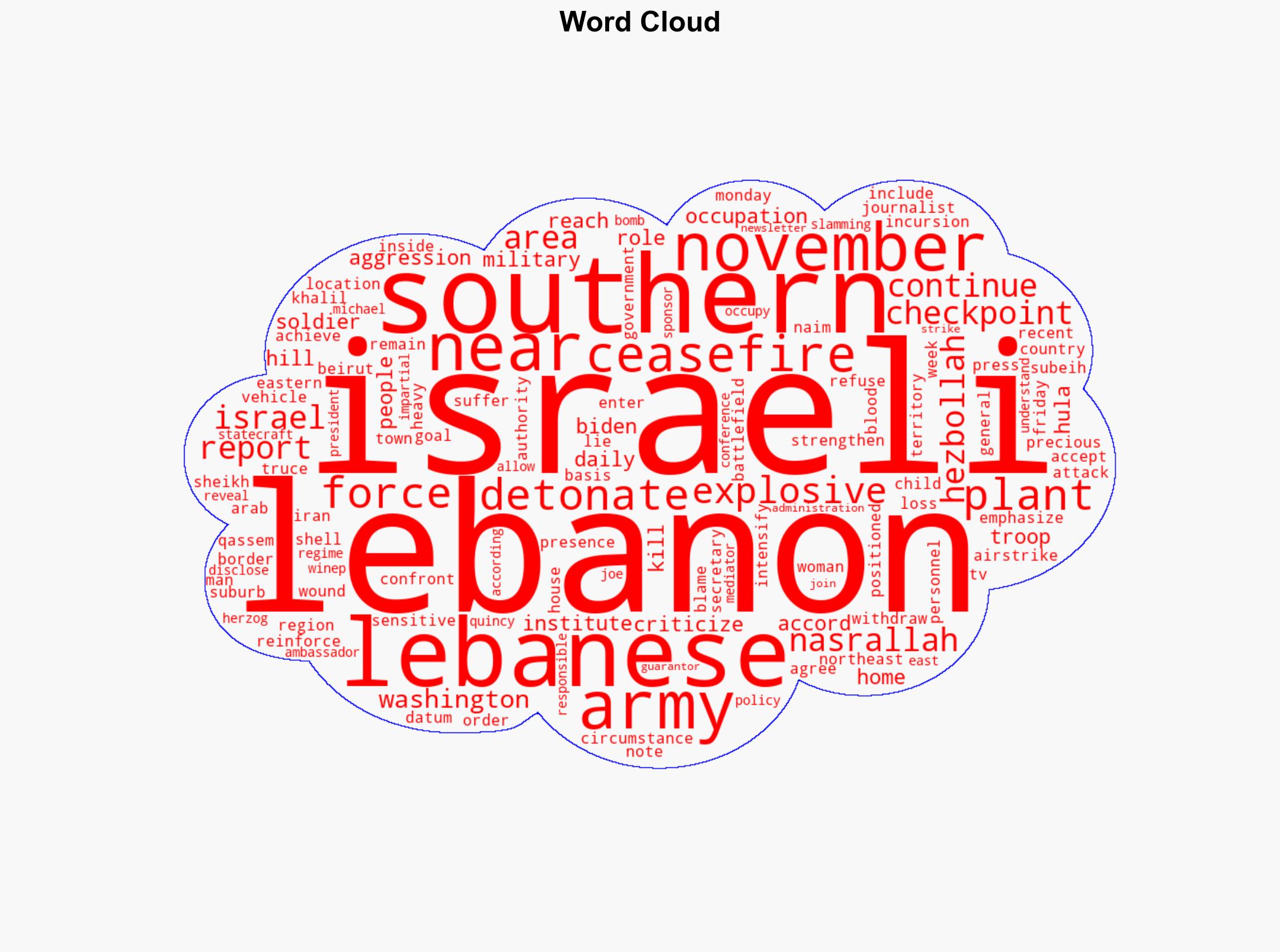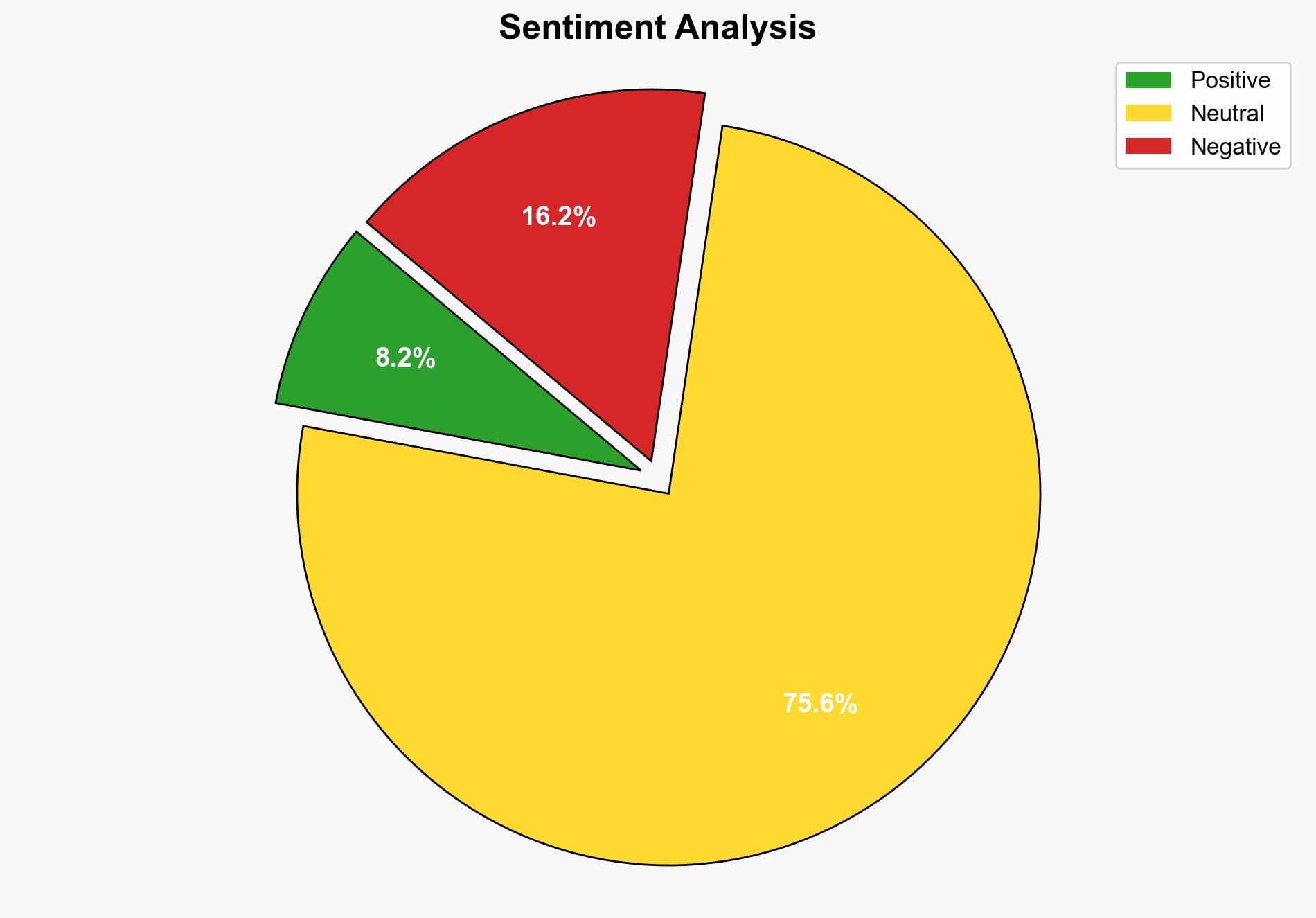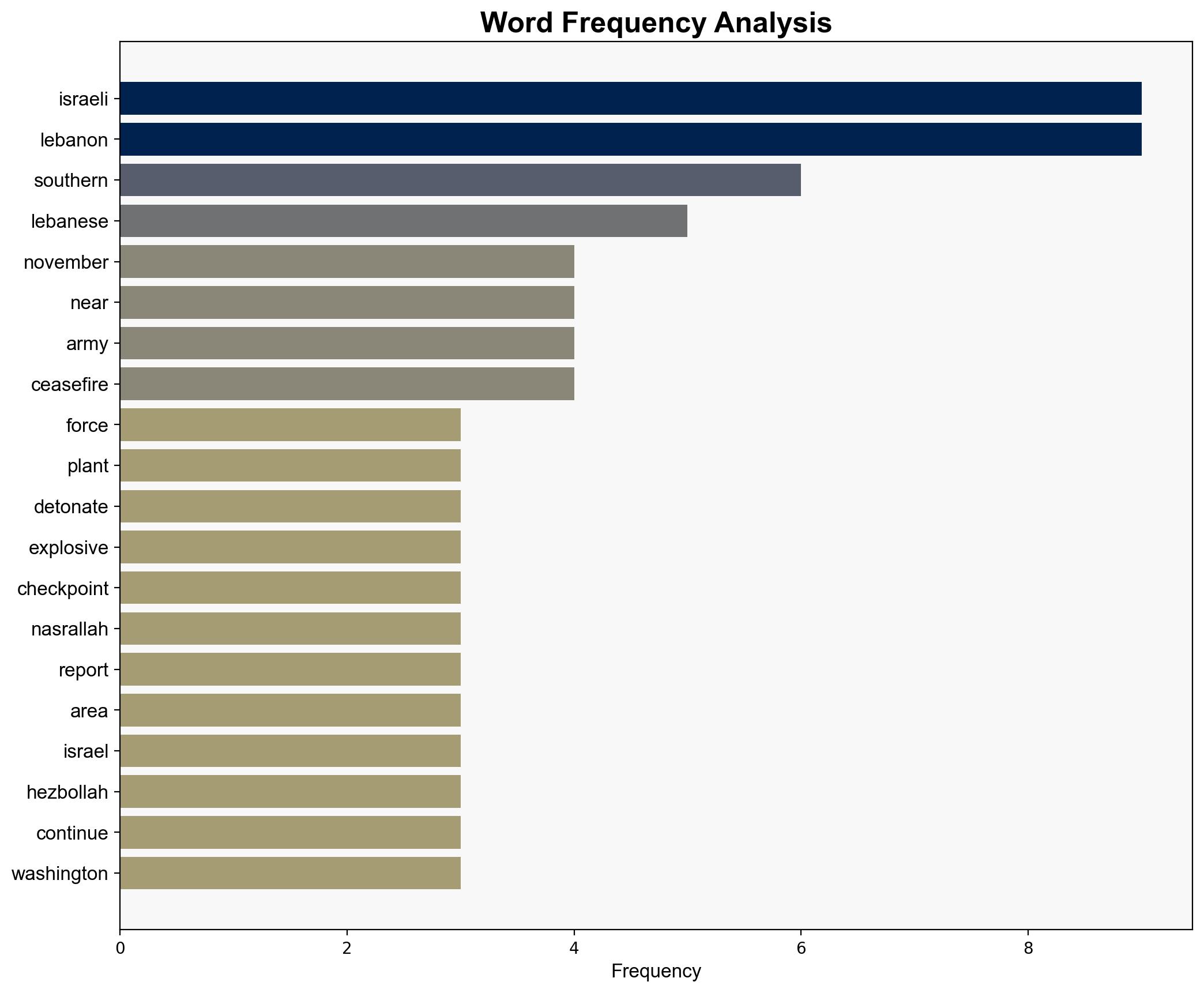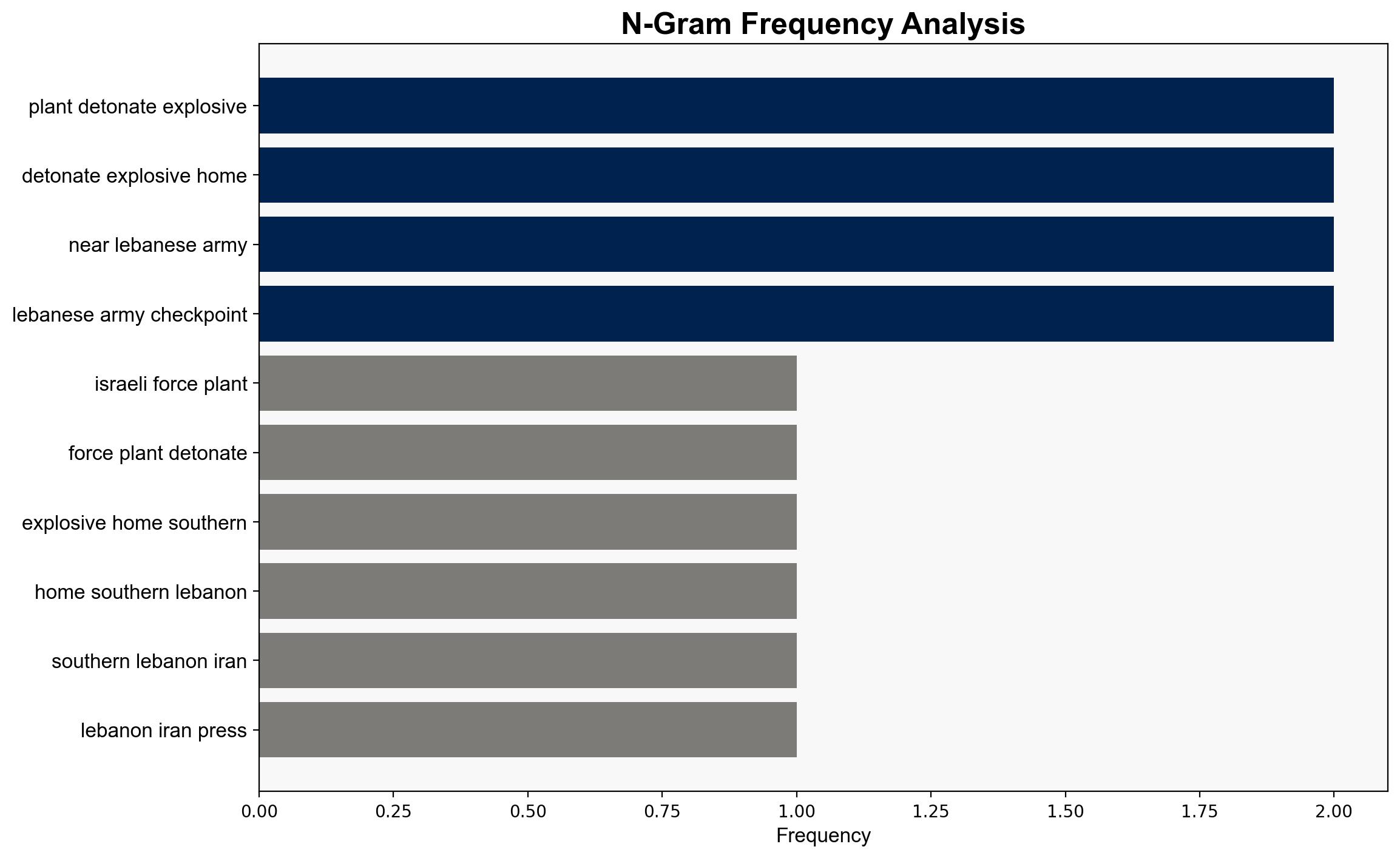Israeli forces plant detonate explosives in two homes in southern Lebanon – Globalsecurity.org
Published on: 2025-11-11
AI-powered OSINT brief from verified open sources. Automated NLP signal extraction with human verification. See our Methodology and Why WorldWideWatchers.
Intelligence Report: Israeli forces plant detonate explosives in two homes in southern Lebanon – Globalsecurity.org
1. BLUF (Bottom Line Up Front)
With a moderate confidence level, the most supported hypothesis is that Israeli forces are conducting targeted operations in southern Lebanon to deter Hezbollah activities and reinforce border security. Strategic recommendations include diplomatic engagement to de-escalate tensions and intelligence-sharing initiatives to monitor cross-border activities.
2. Competing Hypotheses
Hypothesis 1: Israeli forces are conducting preemptive operations to dismantle Hezbollah infrastructure and deter future attacks.
Hypothesis 2: The actions are part of a broader Israeli strategy to provoke a response from Hezbollah, justifying further military engagement.
Hypothesis 1 is more likely given the historical context of Israeli-Hezbollah tensions and recent escalations. The operations align with Israel’s strategic objectives of border security and counter-terrorism. Hypothesis 2, while plausible, lacks substantial evidence of Israeli intent to escalate conflict deliberately.
3. Key Assumptions and Red Flags
Assumptions: It is assumed that the reported actions are accurately attributed to Israeli forces and that the primary objective is counter-terrorism.
Red Flags: Potential bias in reporting from Iranian Press TV and Lebanese sources may exaggerate or misrepresent Israeli actions. The lack of independent verification of events is a significant gap.
Deception Indicators: The timing of reports coinciding with diplomatic discussions may indicate attempts to influence international opinion.
4. Implications and Strategic Risks
The continued Israeli operations in southern Lebanon could lead to increased Hezbollah retaliation, escalating into broader regional conflict. Politically, this could strain Israel’s relations with neighboring countries and international stakeholders. Economically, prolonged conflict may disrupt regional trade and energy supplies. Informationally, both sides may engage in propaganda to sway international opinion.
5. Recommendations and Outlook
- Engage in diplomatic efforts to facilitate dialogue between Israel and Lebanon, potentially involving neutral third-party mediators.
- Enhance intelligence-sharing with regional allies to monitor and preempt potential escalations.
- Best-case scenario: Diplomatic interventions lead to a de-escalation of tensions and a reinforced ceasefire agreement.
- Worst-case scenario: Escalation into full-scale conflict involving regional actors, severely impacting regional stability.
- Most-likely scenario: Continued low-intensity skirmishes with periodic diplomatic interventions preventing full-scale war.
6. Key Individuals and Entities
Khalil Nasrallah (Lebanese journalist), Sheikh Naim Qassem (Hezbollah Secretary General), Michael Herzog (Israeli Ambassador), President Joe Biden.
7. Thematic Tags
Counter-Terrorism, Middle East Conflict, Israeli-Hezbollah Relations, Border Security
Structured Analytic Techniques Applied
- ACH 2.0: Reconstruct likely threat actor intentions via hypothesis testing and structured refutation.
- Indicators Development: Track radicalization signals and propaganda patterns to anticipate operational planning.
- Narrative Pattern Analysis: Analyze spread/adaptation of ideological narratives for recruitment/incitement signals.
Explore more:
Counter-Terrorism Briefs ·
Daily Summary ·
Methodology





